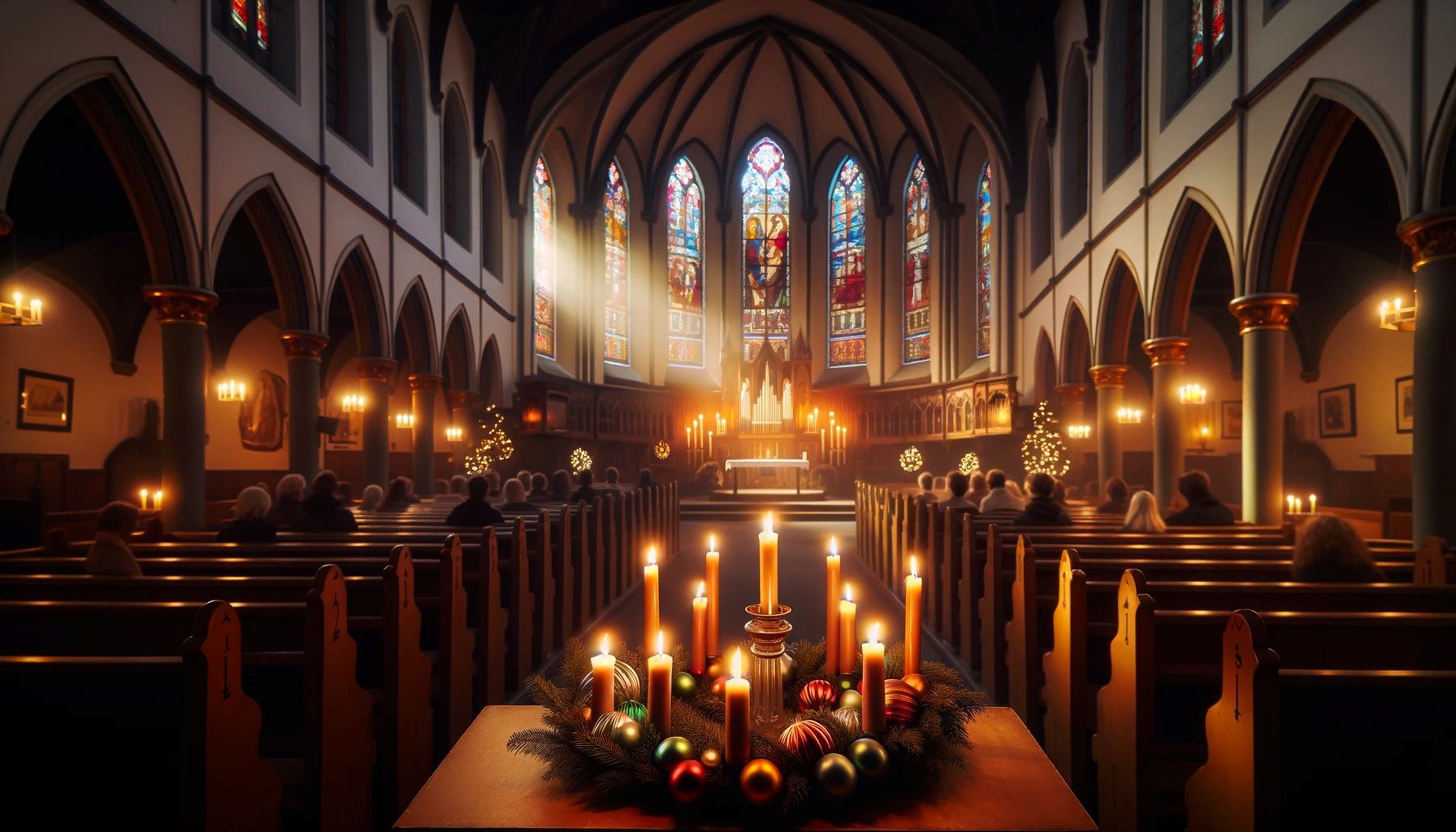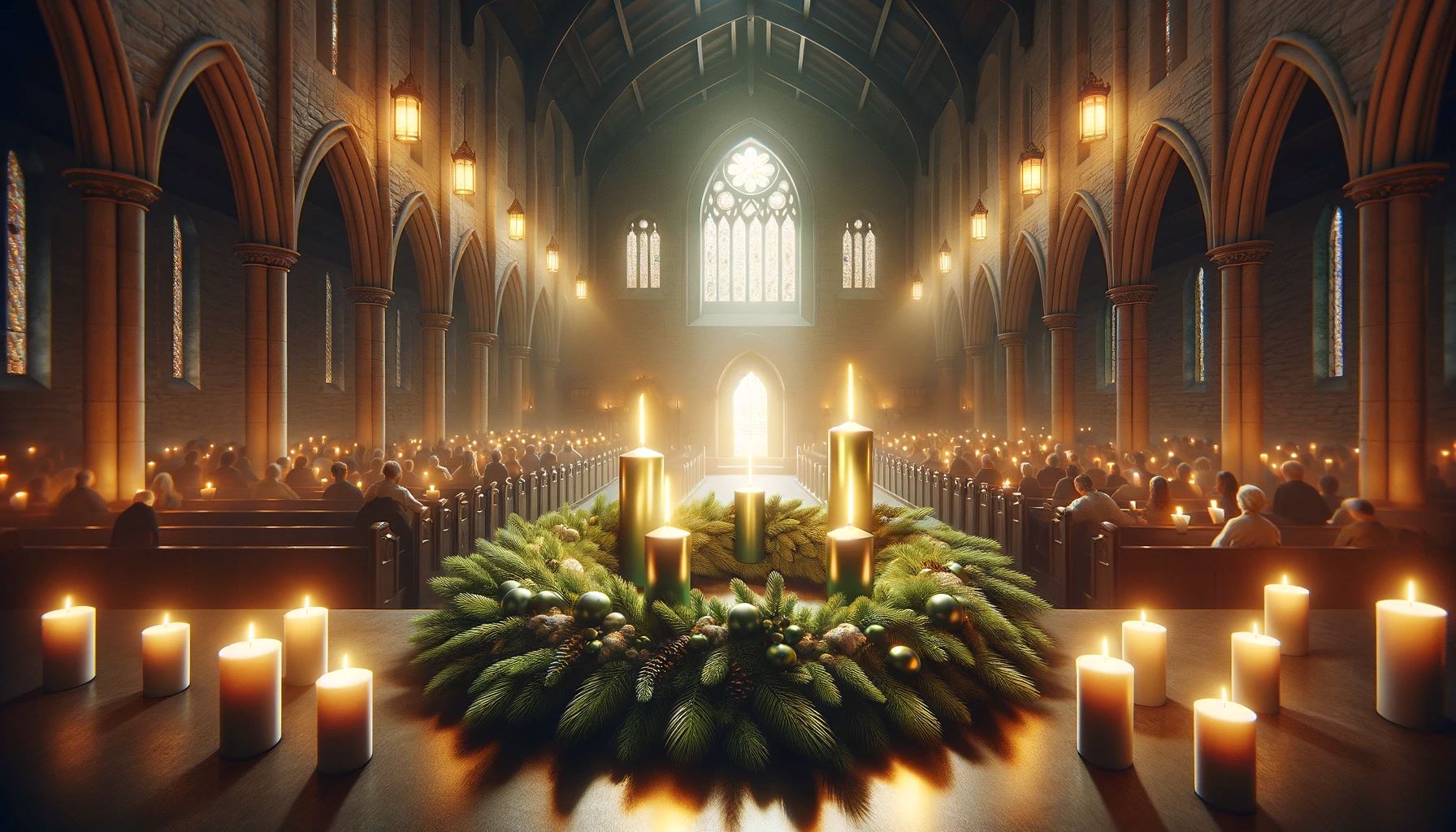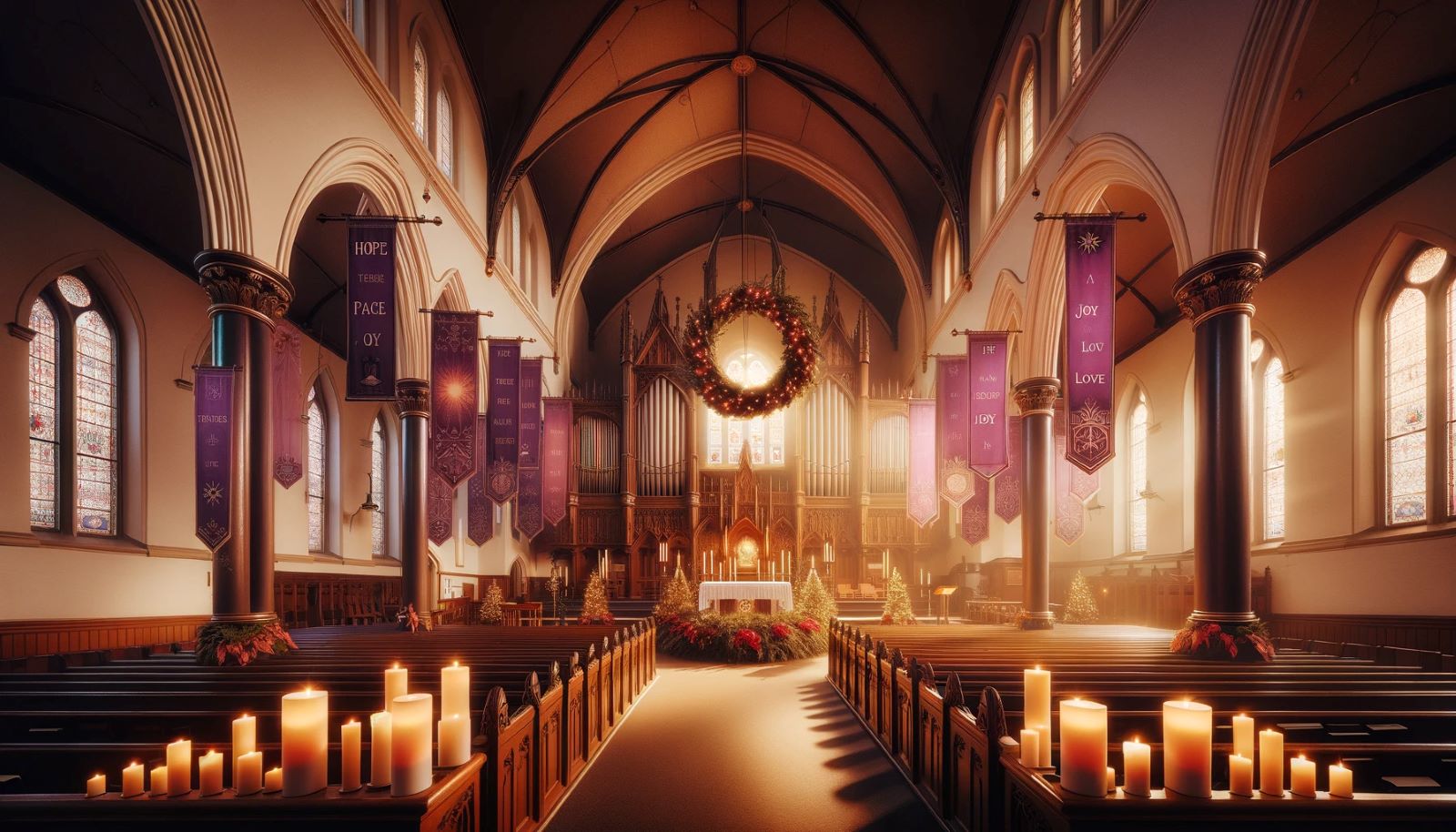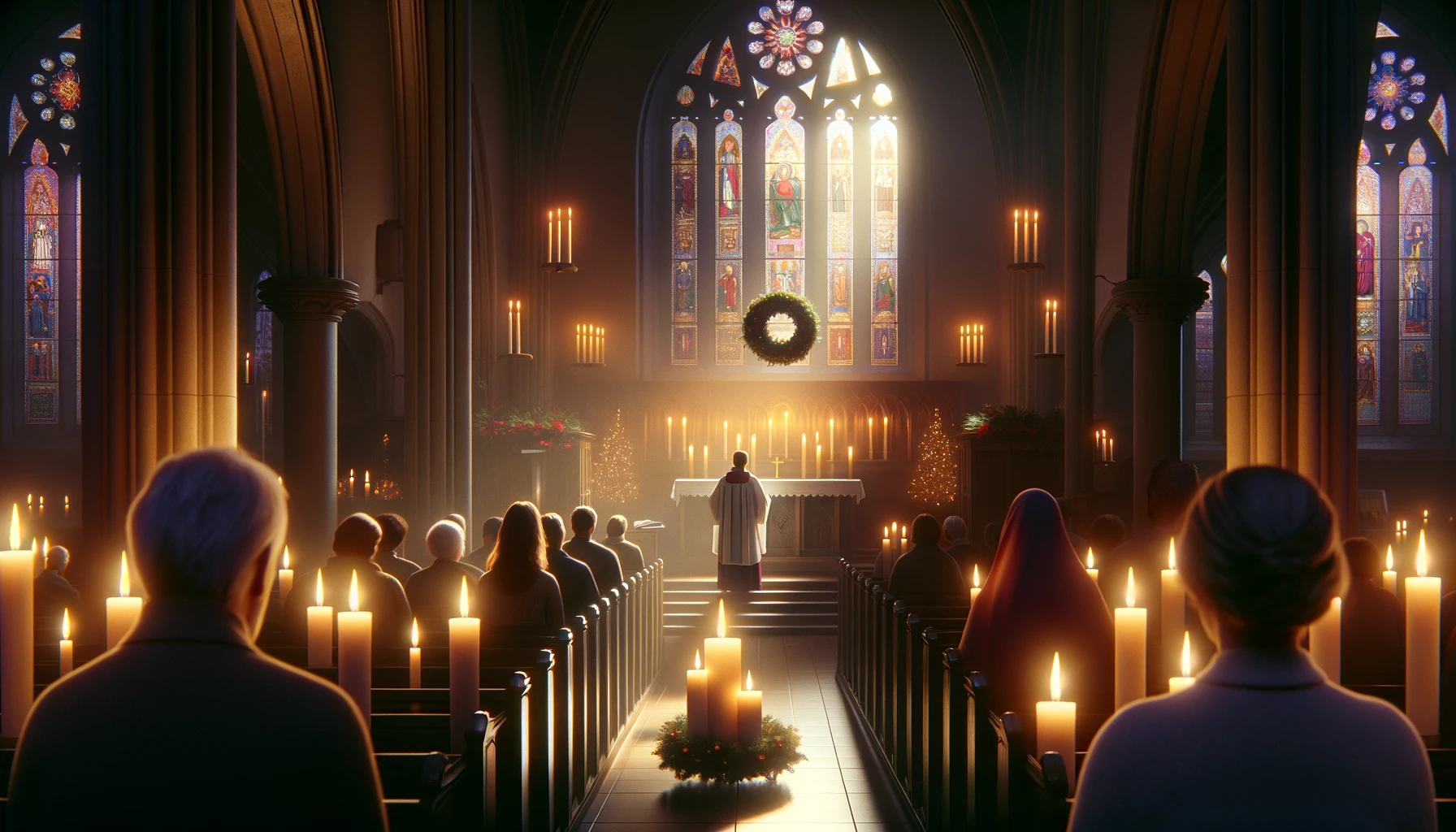Home>Special Themes>What Are The Colours For Advent


Special Themes
What Are The Colours For Advent
Published: February 14, 2024
Ericka Andersen, an editor at Christian.net, expertly merges digital strategy with content creation, focusing on faith and societal issues. Her communication skills enhance the platform's engaging narratives, fostering meaningful dialogue on belief's impact on society.
Discover the symbolic colors for Advent and how they tie into the special themes of this season. Explore the significance of each hue and its representation in the Christian tradition.
(Many of the links in this article redirect to a specific reviewed product. Your purchase of these products through affiliate links helps to generate commission for Christian.net, at no extra cost. Learn more)
Table of Contents
Introduction
Advent, a time of anticipation and preparation for the celebration of Christmas, is a significant period in the Christian calendar. It is a season of hope, joy, love, and peace, marked by various traditions and symbols. One of the most visually striking and symbolic elements of Advent is the use of specific colors in decorations, vestments, and liturgical settings. These colors hold deep meaning and serve as powerful visual reminders of the spiritual themes associated with the Advent season.
Throughout history, colors have been used to convey emotions, represent concepts, and evoke spiritual significance. In the context of Advent, the colors chosen for this season are rich with symbolism, reflecting the journey from darkness to light, from waiting to celebration. Understanding the significance of these colors enriches the experience of Advent and deepens the connection to its spiritual themes.
In this article, we will explore the symbolism of Advent colors, delve into the traditional colors associated with this season, and examine modern interpretations of these hues. By understanding the profound meanings behind the colors of Advent, we can gain a deeper appreciation for this sacred time and the spiritual journey it represents. Let's embark on a colorful exploration of the symbolism and significance of Advent colors, discovering the rich tapestry of traditions and meanings woven into this sacred season.
Read more: What Colour Is Used During Lent
The Symbolism of Advent Colours
The colors associated with Advent hold profound symbolism, each representing a unique aspect of the spiritual journey towards Christmas. These hues are not merely decorative; they are visual expressions of the theological themes that define the Advent season.
Purple:
Traditionally, purple is the most prominent color of Advent. This regal hue symbolizes penitence, preparation, and royalty. It serves as a visual reminder of the solemnity and introspection that characterize the early part of Advent, prompting believers to reflect on their spiritual journey and prepare their hearts for the coming celebration. Purple also evokes the anticipation of the arrival of a king, signifying the royal nature of the awaited Messiah.
Blue:
In some Christian traditions, blue is used as an alternative to purple during Advent. This serene color represents hope, peace, and the anticipation of the arrival of Christ. Blue skies and calm waters are often associated with tranquility and the promise of a new beginning, reflecting the hopeful anticipation of the birth of Jesus. The use of blue during Advent conveys a sense of peaceful expectation and the assurance of God's faithfulness.
Pink:
The third Sunday of Advent is marked by the lighting of a pink candle on the Advent wreath, signifying joy amidst the solemnity of the season. The color pink symbolizes rejoicing, representing the joyful anticipation of the imminent arrival of Christ. It serves as a reminder that the waiting period is not solely characterized by penitence and reflection but also by the exuberant anticipation of the fulfillment of God's promises.
White:
As Advent draws to a close and transitions into the celebration of Christmas, the color white emerges as a symbol of purity, light, and the joyous arrival of Christ. White is often used on Christmas Day and throughout the Christmas season, signifying the culmination of the Advent journey and the radiant celebration of the birth of Jesus.
Understanding the symbolism of Advent colors enriches the spiritual experience of this season, inviting believers to engage with its profound themes on a visual and emotional level. These colors serve as powerful reminders of the spiritual significance of Advent, guiding individuals on a transformative journey from reflection and anticipation to joyous celebration.
The Traditional Advent Colours
The traditional colors of Advent, deeply rooted in Christian symbolism and tradition, hold profound significance in the spiritual journey leading up to Christmas. These colors, namely purple, blue, pink, and white, are carefully chosen to reflect the theological themes and emotions associated with the Advent season.
Purple:
Historically, purple has been the predominant color of Advent, embodying themes of penitence, preparation, and royalty. This rich and solemn hue serves as a visual reminder of the introspective nature of the early Advent period, prompting believers to engage in self-reflection and spiritual preparation. The color purple, often associated with royalty, also symbolizes the anticipation of the arrival of a king, signifying the royal nature of the awaited Messiah.
Blue:
In certain Christian traditions, blue is used as an alternative to purple during Advent. This serene and calming color represents hope, peace, and the anticipation of the arrival of Christ. Blue, reminiscent of clear skies and tranquil waters, evokes a sense of peaceful expectation and the assurance of God's faithfulness. It serves as a visual expression of the hopeful anticipation of the birth of Jesus and the promise of a new beginning.
Pink:
The third Sunday of Advent is marked by the lighting of a pink candle on the Advent wreath, symbolizing joy amidst the solemnity of the season. The color pink represents rejoicing and embodies the joyful anticipation of the imminent arrival of Christ. It serves as a poignant reminder that the waiting period is not solely characterized by penitence and reflection but also by the exuberant anticipation of the fulfillment of God's promises.
White:
As Advent draws to a close and transitions into the celebration of Christmas, the color white emerges as a symbol of purity, light, and the joyous arrival of Christ. White, often used on Christmas Day and throughout the Christmas season, signifies the culmination of the Advent journey and the radiant celebration of the birth of Jesus.
The traditional Advent colors, with their deep theological significance, guide believers through a transformative spiritual journey, from introspection and anticipation to the jubilant celebration of the birth of Christ. These colors serve as powerful visual reminders of the sacred themes of Advent, enriching the spiritual experience and fostering a deeper connection to the profound significance of this season.
Modern Interpretations of Advent Colours
In contemporary times, the traditional colors of Advent have undergone modern interpretations, reflecting evolving perspectives and creative expressions while retaining the core symbolism of the season. These modern interpretations embrace a broader spectrum of hues, offering new layers of meaning and visual richness to the Advent experience.
Burgundy:
A modern addition to the Advent color palette, burgundy has gained popularity as a symbol of both the solemnity and warmth of the season. This deep, red-infused hue conveys a sense of reverence and contemplation, inviting individuals to engage in introspection while also evoking the warmth of community and shared anticipation.
Read more: What Are The Dates Of Advent
Gold:
In some modern interpretations, gold has been incorporated as a complementary color during Advent, symbolizing the radiant and transcendent nature of the season. Gold represents the enduring light of hope and the anticipation of the coming of Christ, infusing the Advent palette with a sense of majesty and divine splendor.
Green:
While traditionally associated with the liturgical season of Ordinary Time, green has found its way into modern Advent expressions, symbolizing the evergreen nature of God's love and the continuous growth of faith. This addition of green to the Advent color scheme serves as a reminder of the eternal presence of God amidst the anticipation of Christ's birth.
Silver:
In contemporary interpretations, silver has been embraced as a color symbolizing purity, clarity, and the illuminating presence of God. This modern addition to the Advent palette reflects the spiritual journey from darkness to light, capturing the essence of the Advent season's transformative themes.
Multicolored:
Embracing diversity and inclusivity, some modern interpretations of Advent colors incorporate a multicolored approach, symbolizing the unity and varied experiences within the faith community. This vibrant expression reflects the richness of the Advent journey, encompassing a tapestry of emotions, traditions, and perspectives.
These modern interpretations of Advent colors, while expanding the traditional palette, remain rooted in the foundational symbolism of the season. They offer a contemporary lens through which to engage with the spiritual themes of Advent, inviting individuals to explore the depth and diversity of the season's significance.
The evolving interpretations of Advent colors reflect the dynamic nature of faith traditions and the timeless relevance of the Advent season, providing a visually captivating and spiritually enriching experience for believers as they journey towards the celebration of Christmas.
Read more: What Is An Advent Candle?
Conclusion
The colors of Advent, steeped in rich symbolism and tradition, serve as powerful visual anchors that guide believers through a transformative spiritual journey. From the solemn introspection represented by purple to the joyful anticipation embodied in pink, these hues encapsulate the profound themes of hope, peace, love, and joy that define the Advent season. As Advent progresses, the transition to the radiant purity of white symbolizes the culmination of this spiritual odyssey, leading to the joyous celebration of the birth of Christ.
The traditional colors of purple, blue, pink, and white, deeply rooted in Christian symbolism, provide a timeless framework for engaging with the spiritual significance of Advent. These hues, with their profound theological meanings, invite believers to immerse themselves in the anticipation and preparation for the arrival of Christ, fostering a deeper connection to the sacred journey of Advent.
Moreover, the modern interpretations of Advent colors, such as burgundy, gold, green, silver, and multicolored expressions, offer contemporary perspectives that expand the visual tapestry of the season while retaining the core symbolism. These modern hues reflect the dynamic nature of faith traditions and provide a visually captivating and spiritually enriching experience for believers as they journey towards the celebration of Christmas.
In conclusion, the colors of Advent, whether traditional or modern, serve as poignant reminders of the enduring themes of faith, hope, and love that resonate throughout the Advent season. They invite believers to engage with the spiritual journey on a visual and emotional level, enriching the experience of anticipation, reflection, and celebration. As we immerse ourselves in the vibrant hues of Advent, may we be drawn closer to the profound significance of this sacred season, embracing its timeless messages of hope, peace, love, and joy as we eagerly await the celebration of the birth of Christ.













